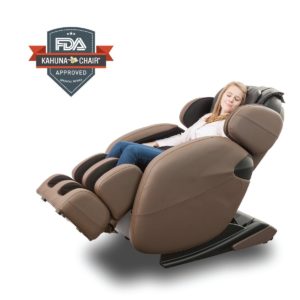Back pain, especially at the lower side of the spine, is said to be the second most common cause of missed workdays, and disability in US adults.
If you’ve ever suffered from it, you know how uncomfortable and painful it can be to ignore as it can disrupt your everyday performance and focus.
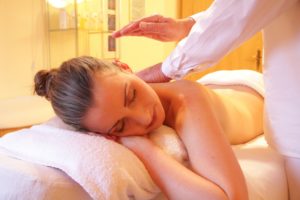
Simple daily things like sitting on a couch, lying in bed, or even walking up a flight of stairs turn into significant challenges.
However, over time, back pain has a way of improving on its own, but it may get worse if left unattended.
Furthermore, sedentary lifestyles can also initiate chronic back pain, seeing as people may spend most of their workday sitting.
Approximately $50 billion spent by Americans go into back-related medical expenses each year.
One of these expenses goes into massage therapy, as people seek to ease back pain. But does massage help with back pain?
Let’s find out more –
Research on Massage and Back Pain
Evidence in support of using massage therapy for back pain relief exists, especially in the short-term.
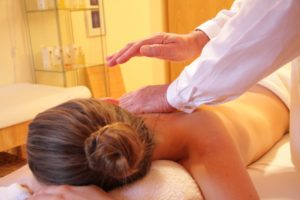
The Cochrane Database of Systematic Reviews published a review study that analyzed 25 previously published studies on massage for back pain.
The study found that massage proved successful at pain reduction and short-term improvement of function. This is in comparison to inactive treatments.
However, the researchers from the study also noted that increased pain in 1.5 to 25 percent of the participants was the most common adverse event.
Similarly, a review published in 2017 in the Annals of Internal Medicine examined previously published trials on massage for chronic or acute lower back pain.
Out of nine trials, eight showed that massage was a more effective intervention than others like relaxation therapy, exercise, physiotherapy, acupuncture, and manipulation.
Another study in Pain Medicine published by the University of Kentucky and Indiana University researchers suggests that massage can help with lower back pain.
The study examined 104 individuals who suffered persistent pain, and each was referred to professional massage therapy with ten sessions over 12 weeks.
More than half of the participants reported improvement, with 75 percent of this group noting they felt better after 24 weeks.
Another study published in Complementary Therapies in Medicine, 2016, examined Thai massage and its immediate effect in patients with upper back pain.
Before the study, each participant had to report having back pain for at least three months, and these were assigned a 30-minute Thai massage session or a control group.
The individuals who got the Thai massage reported a significant reduction in upper back pain and muscle tension compared to the control group, and those individuals received sham microwave diathermy.
Massage Research: Difficulties and Way Forward
While there are still gaps in massage therapy research in as far as completely curing back pain, there are several treatment options available for the same.
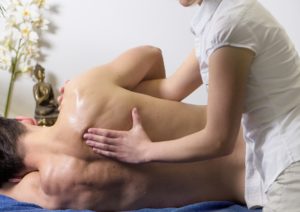
Conventional treatments like strengthening and stretching exercises, hot packs, acupuncture, medications, traction, physical therapy, surgery, nerve block therapy, and spinal manipulation are available.
Ultimately, more research on massage for back pain is needed to confirm its effect over the long term.
This would help bridge the gap that exists between clinical practice by massage therapists and researchers.
Massage Techniques for Back Pain
There are many different massage techniques, some which may have more impact on back pain than others, but the results and findings are positively encouraging.
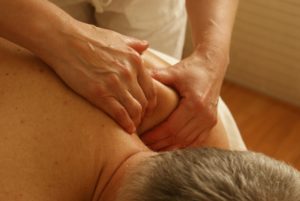
Besides Thai Massage and reflexology, there are different massage techniques available today, including:
Swedish massage, which is the most common, especially in the US. It involves using long, smooth strokes while applying lotion or oil and is one of the first massage types most massage therapists begin with.
Deep Tissue massage, goes more in-depth to target the muscle and connective tissue. It is used mainly for postural problems, painful or chronically tight muscles, and repetitive strain.
It may come with some physical discomfort because it targets the deeper muscle layers, and you may feel sore afterward.
Shiatsu, a Japanese bodywork modality is where the massage therapist applies pressure points all over the body to balance a client’s chi, life energy.
Massage is a less intrusive treatment option with little risk for clients and should be considered strongly before surgery, which is used only as a last resort after other therapies fail.
Massage Benefits
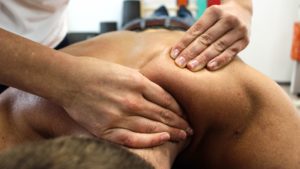
Massage therapy has several potential benefits on the health of people suffering from back pain, including:
- Increased blood circulation and flow – This brings the necessary nutrition to tissues and muscles while helping with the recovery of muscle soreness and strain.
- Reduced muscle tension – Massage relaxes the muscles while improving flexibility and reducing pain from tight muscles. It even improves sleep.
- Increased levels of endorphins: massage is a mood enhancer that increases the “feel good” brain chemicals, thus easing anxiety and depression.
It also helps in pain reduction and accelerates recovery, especially for people with chronic back issues.
Other Substitutes –
While massage therapy may be practical for some people, some find periodic appointments impractical.
This may be occasioned by busy schedules or travel times, or those who value their privacy so much, a hands-on massage may not work for them.
There may be several alternatives to consider, though they’re not necessarily an exact substitute for the human touch of a massage therapist.
Several therapeutic massage products are also available that you can use on the go or at home like massage pillows or hand-held massagers,
If you’ve experienced significant relief from back pain owing to massage therapy, you may want to invest in a massage chair to get overall massage-like benefits.
Most such chairs are designed to mimic massage techniques, especially Shiatsu and Swedish massage.
They’re thus potentially helpful for particular pain points in the back for general relaxation.
Summary
Although massage is usually safe for clients with back pain, consult your primary care provider for an accurate medical diagnosis on the cause of your back pain to rule out potentially dangerous issues.
There is certainly some evidence that it offers relief for back pain, but large-scale clinical trials are continuing to settle this issue conclusively.
Jenny Travens –

Jenny is a creative writer who has many passions and interests. Health and wellness is one area where she likes to contribute as much as she can. She is currently a contributing writer to Meddentsafety & other top blogs.
Twitter – @jennytravens

